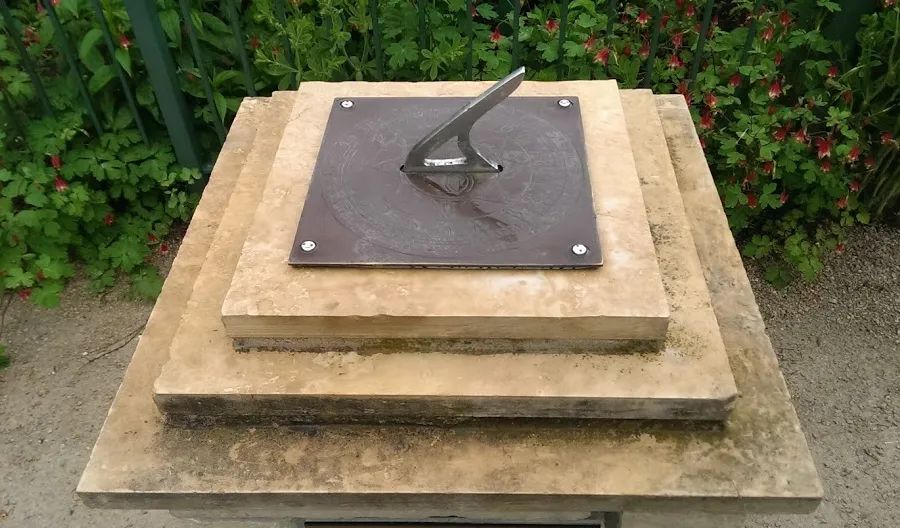
Weekly Gem #93 A timepiece to fall back on
Published 11/5/2016
Location: This 'hidden gem' is located just up the hill from one of the bridges of Madison County. Go to Winterset, Iowa, and head south on 9th street until it turns into a park (see Clue Me! Map). The Cutler-Donahue covered bridge is to your right, this timepiece is on the left. Of course, it's hidden in the hedge maze, so from here you'll have to go find it. Or, just memorize these directions: Left, left, right, right, left, left, right, left, right, left, right, right, left, right, right, left, left, right, right. I'm absolutely certain that's mostly right.
The sundial reading will be 'off' by about an hour, more or less, until next Spring. Even when daylight savings returns, you may notice some odd discrepancies between your clock and the sundial. These are explained in part by the fact that the sundial was picked up in England, but planted in Iowa, so some details of shadows and time may not align perfectly.
Then there's the "relative motion of bodies in space" issue ... which can be summarized as follows: If you want to be correct, read the sundial. If you want to be 'on time,' follow your watch. Not to state the obvious, but here's why.
The apparent motion of the Sun along the plane of the ecliptic is irregular because the Earth's orbit is not circular, and because the Earth is tilted. Mean Solar time (shown by your modern timepieces) assumes a circular orbit, no tilt, and everything runs like "clockwork." A Sundial takes into account the the true positions of earth and sun, therefore showing Real Solar time. Since clocks use Mean Solar Time there will be an apparent error between your watch and your sundial.
To use sundial time, while still being close to 'on time,' here's a guide. First, know that your sundial time is only identical with your wristwatch time 4 times a year, and runs either fast or slow the remaining days.
January 1, your sundial will be about 3 minutes slow.
February 12, the sundial reads 14 min 20 sec slow (the furthest behind that it will fall).
April 16 is 'identical' date number 1, your sundial having caught up and ready to spring forward.
May 15 it will run ahead by 3m 44s, and will start losing time again.
June 14 is 'identical' date number 2.
July 26 it will be behind by 6m 25s, and now begins to catch up again.
September 2 is 'identical' date number 3.
November 3 the sundial is ahead by 16m 23s (the furthest ahead it will be all year), and will now fall back.
December 25 is 'identical' date number 4.
Extrapolate from there. If you have any questions, we'll meet at the sundial at 3:00. Sharp!
.........
Here's the hidden gem entry from our Clue Me! map.
Clue
How long have we been wandering around in here?
Description
Sundial
Why It's Interesting
Go ahead. Spend some time meandering around in the hedge maze. After some time (passing by some of the 1,850 privet plants that make up this maze - likely passing some more than once!) hopefully you'll end up at the center of the maze. That's where you'll find the sundial. This sundial was bought at an antique shop in London, England. It is adjusted for Central Daylight Time.















